Health Care > EXAM > BTEC Level 2 Unit 1: Fitness for Sport Exam 57 Questions with Answers,100% CORRECT (All)
BTEC Level 2 Unit 1: Fitness for Sport Exam 57 Questions with Answers,100% CORRECT
Document Content and Description Below
BTEC Level 2 Unit 1: Fitness for Sport Exam 57 Questions with Answers Aerobic endurance - CORRECT ANSWER the ability of the cardio respiratory system to work efficiently, supplying nutrients and ox... ygen to working muscles during sustained physical activity muscular endurance - CORRECT ANSWER the ability of the muscular system to work efficiently, where a muscle can continue contracting over a period of time against a light to moderate fixed resistance load flexibility - CORRECT ANSWER having an adequate range of motion in all joints of the body; the ability to move a joint fluidly through its complete range of movement speed - CORRECT ANSWER distance divided by the time taken accelerative speed - CORRECT ANSWER sprints up to 30 metres pure speed - CORRECT ANSWER sprints up to 60 metres speed endurance - CORRECT ANSWER sprints with short recovery period in-between muscular strength - CORRECT ANSWER the maximum force (in kg or N) that can be generated by a muscle or muscle group body composition - CORRECT ANSWER the relative ratio of fat mass to fat-free mass (vital organs, muscle, bone) in the body agility - CORRECT ANSWER the ability of a sports performer to quickly and precisely move or change direction without losing balance or time balance - CORRECT ANSWER the ability to maintain centre of mass over a base of support static balance - CORRECT ANSWER the body's ability to maintain balance while still dynamic balance - CORRECT ANSWER the body's ability to maintain balance while moving coordination - CORRECT ANSWER ... power - CORRECT ANSWER the product of strength and speed reaction time - CORRECT ANSWER the time taken for a sports performer to respond to a stimulus and the initiation of their response HR - CORRECT ANSWER Heart rate HR Max - CORRECT ANSWER Maximum Heart Rate HR Max - CORRECT ANSWER 220-Age (years) Borg (1970) (6-20) Rating of Perceived Exertion - CORRECT ANSWER scale used to measure exercise intensity FITT Training Principles - CORRECT ANSWER Frequency, Intensity, Time, Type frequency - CORRECT ANSWER the number of training sessions completed over a period of time, usually per week intensity - CORRECT ANSWER how hard an individual will train time - CORRECT ANSWER how long an individual will train for type - CORRECT ANSWER how an individual will train by selecting a training method to improve a specific component of fitness and/or their sports performance progressive overload - CORRECT ANSWER in order to progress, training needs to be demanding enough to cause the body to adapt, improving performance specificity - CORRECT ANSWER training should be specific to the individual's sport, activity or physical/skill-related fitness goals to be developed individual differences/needs - CORRECT ANSWER the programme should be designed to meet individual training goals and needs adaptation - CORRECT ANSWER how the body reacts to training loads by increasing its ability to cope with those loads reversibility - CORRECT ANSWER if training stops, or the intensity of training is not sufficient to cause adaptation, training effects are reversed variation - CORRECT ANSWER it is important to vary the training regime to avoid boredom and maintain enjoyment flexibility training - CORRECT ANSWER involves stretching and extending various muscle groups to achieve higher levels of stretch in the muscle. active stretching - CORRECT ANSWER performed independently where the performer applies internal force to stretch and lengthen the muscle passive stretching - CORRECT ANSWER requires the help of another person or an object such as a wall. The other person/object applies external force causing the muscle to stretch ballistic stretching - CORRECT ANSWER where the performer makes fast, jerky movements through the complete range of motion, usually in the form of bobbing or bouncing Proprioceptive Neuromuscular Facilitation (PNF) - CORRECT ANSWER flexibility technique that promotes or hastens the neuromuscular response through stimulation of the proprioceptors circuit training - CORRECT ANSWER different stations/exercises are used to develop strength, muscular endurance, power or aerobic endurance free weights - CORRECT ANSWER use of barbells or dumb-bells to perform different types of dynamic exercises plyometrics - CORRECT ANSWER develops sport-specific explosive power and strength continuous training - CORRECT ANSWER this is training at a steady pace and moderate intensity for a minimum period of 30 minutes fartlek training - CORRECT ANSWER this is where the intensity of training is varied by running at different speeds or over different terrain interval training - CORRECT ANSWER where the individual performs a work period followed by a rest or recovery period hollow sprints - CORRECT ANSWER a series of sprints separated by a 'hollow' period of jogging or walking acceleration sprints - CORRECT ANSWER This is where the pace is gradually increased from a standing or rolling start to jogging, then to striding, and then to a maximum sprint interval training - CORRECT ANSWER the individual performs a work period followed by a rest or recovery period flexibility test - CORRECT ANSWER sit and reach test strength test - CORRECT ANSWER grip dynamometer aerobic test - CORRECT ANSWER multistage fitness (bleep) test speed test - CORRECT ANSWER 35 sprint speed and agility test - CORRECT ANSWER Illinois Agility Run anaerobic power test - CORRECT ANSWER vertical jump test muscular endurance test - CORRECT ANSWER one minute press up, one minute sit up body composition test - CORRECT ANSWER BMI (Body Mass Index), bioelectrical impedance test validity - CORRECT ANSWER actually measuring exactly what you intend to measure reliability - CORRECT ANSWER ability of a test to yield very similar scores for the same individual over repeated testing's practicality - CORRECT ANSWER extent to which an assessment instrument or procedure is inexpensive and easy to use and takes only a small amount of time to administer and score. normative data - CORRECT ANSWER data generated that allows comparison of an individual to a group. [Show More]
Last updated: 2 years ago
Preview 1 out of 6 pages
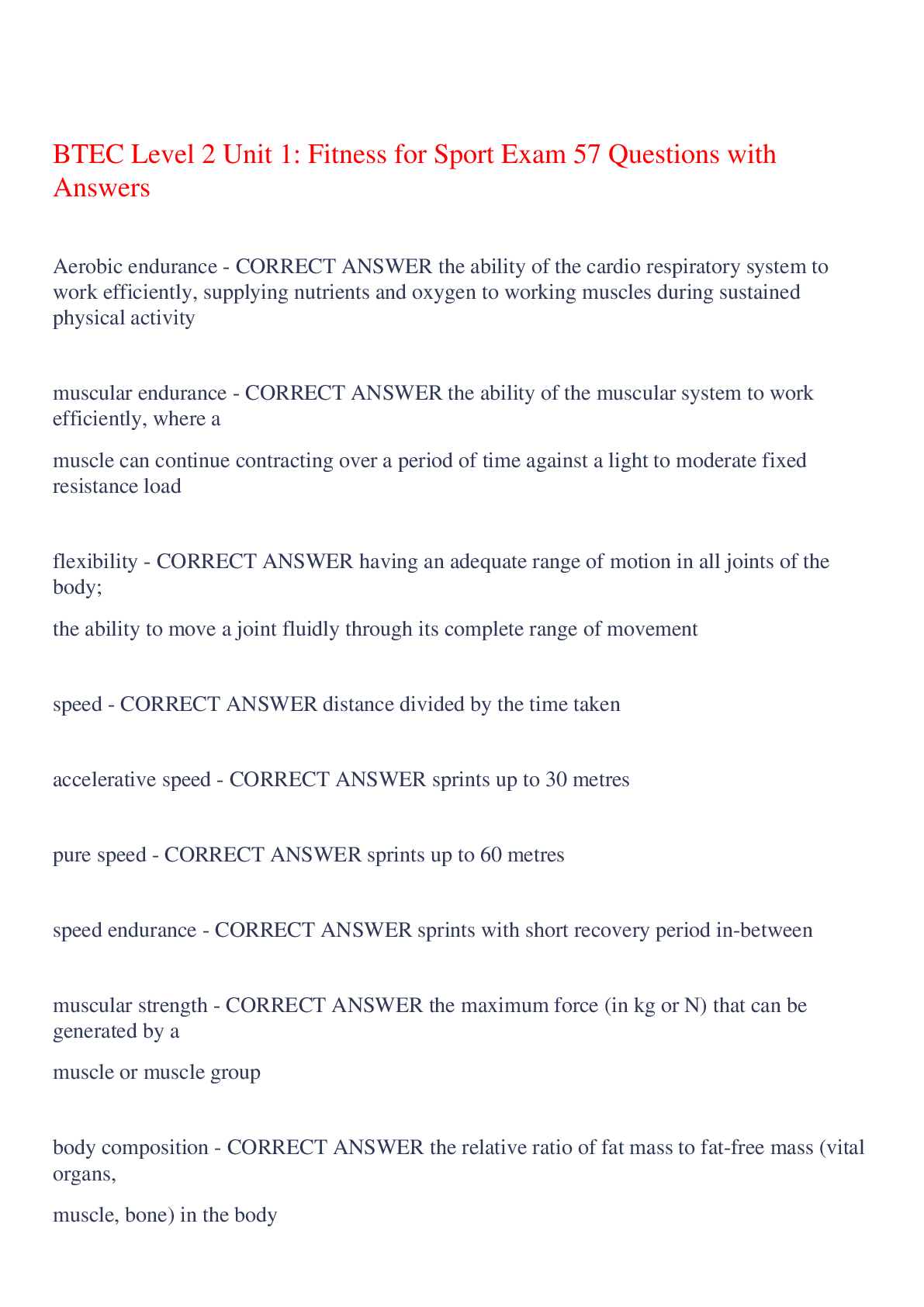
Buy this document to get the full access instantly
Instant Download Access after purchase
Buy NowInstant download
We Accept:

Reviews( 0 )
$9.50
Can't find what you want? Try our AI powered Search
Document information
Connected school, study & course
About the document
Uploaded On
Aug 08, 2023
Number of pages
6
Written in
Additional information
This document has been written for:
Uploaded
Aug 08, 2023
Downloads
0
Views
77


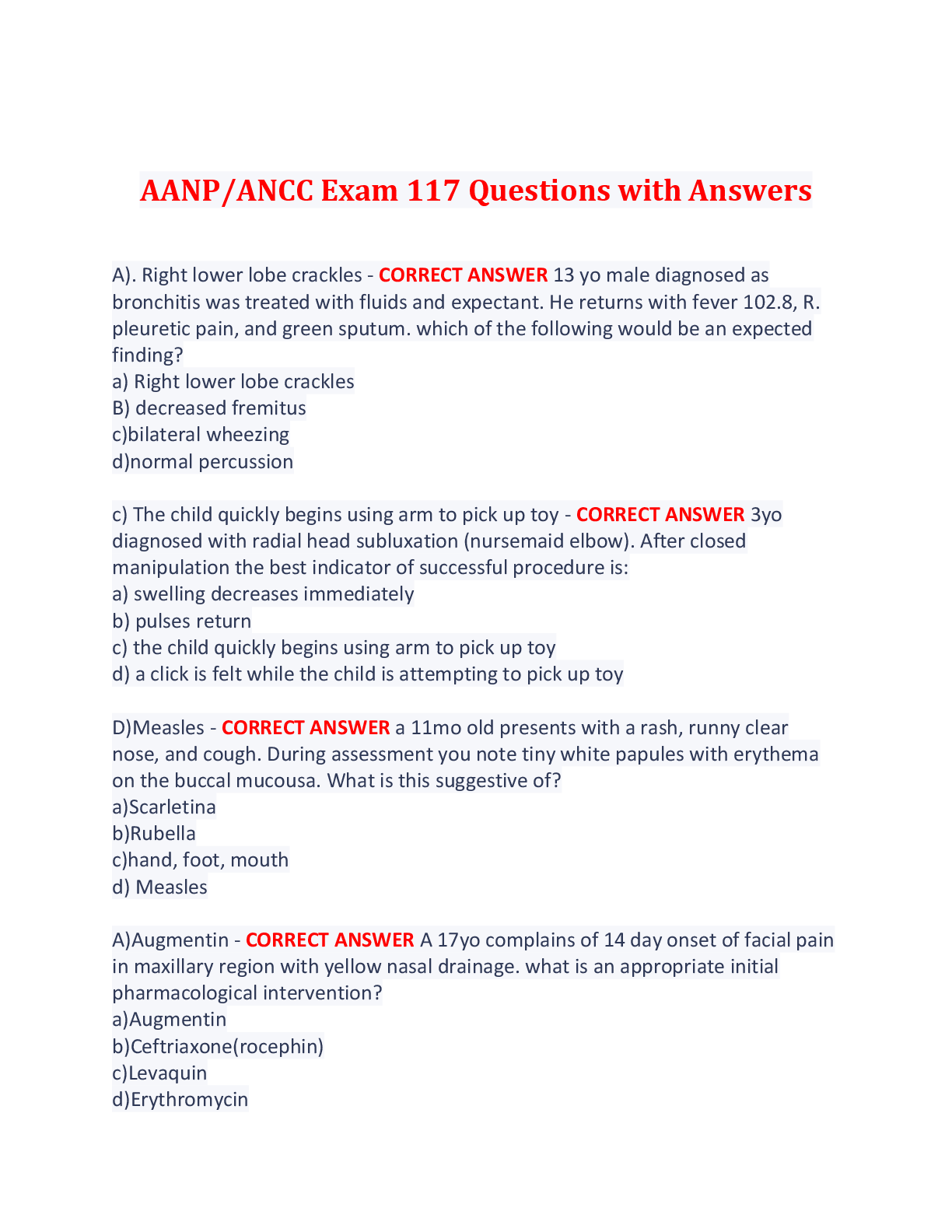

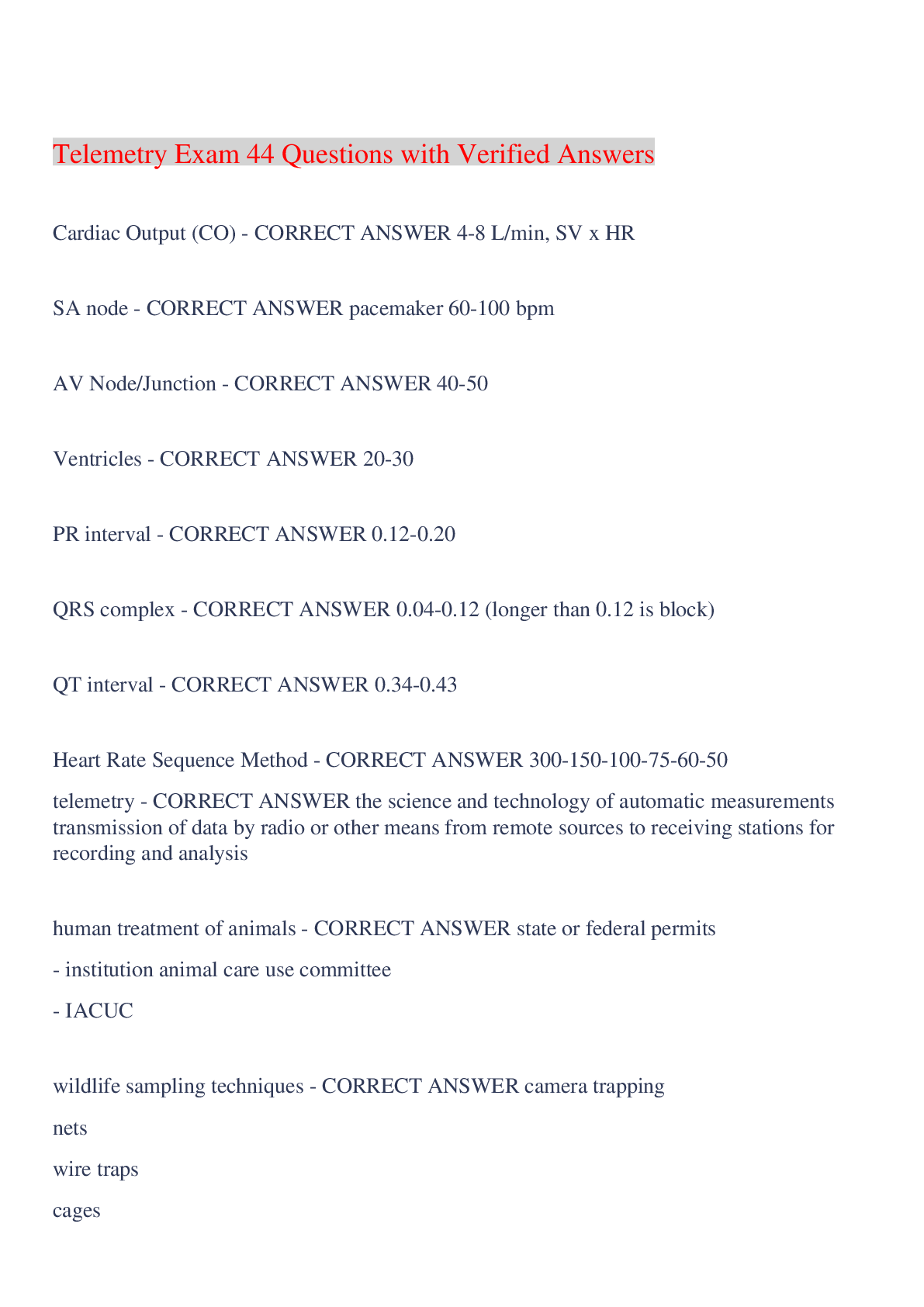
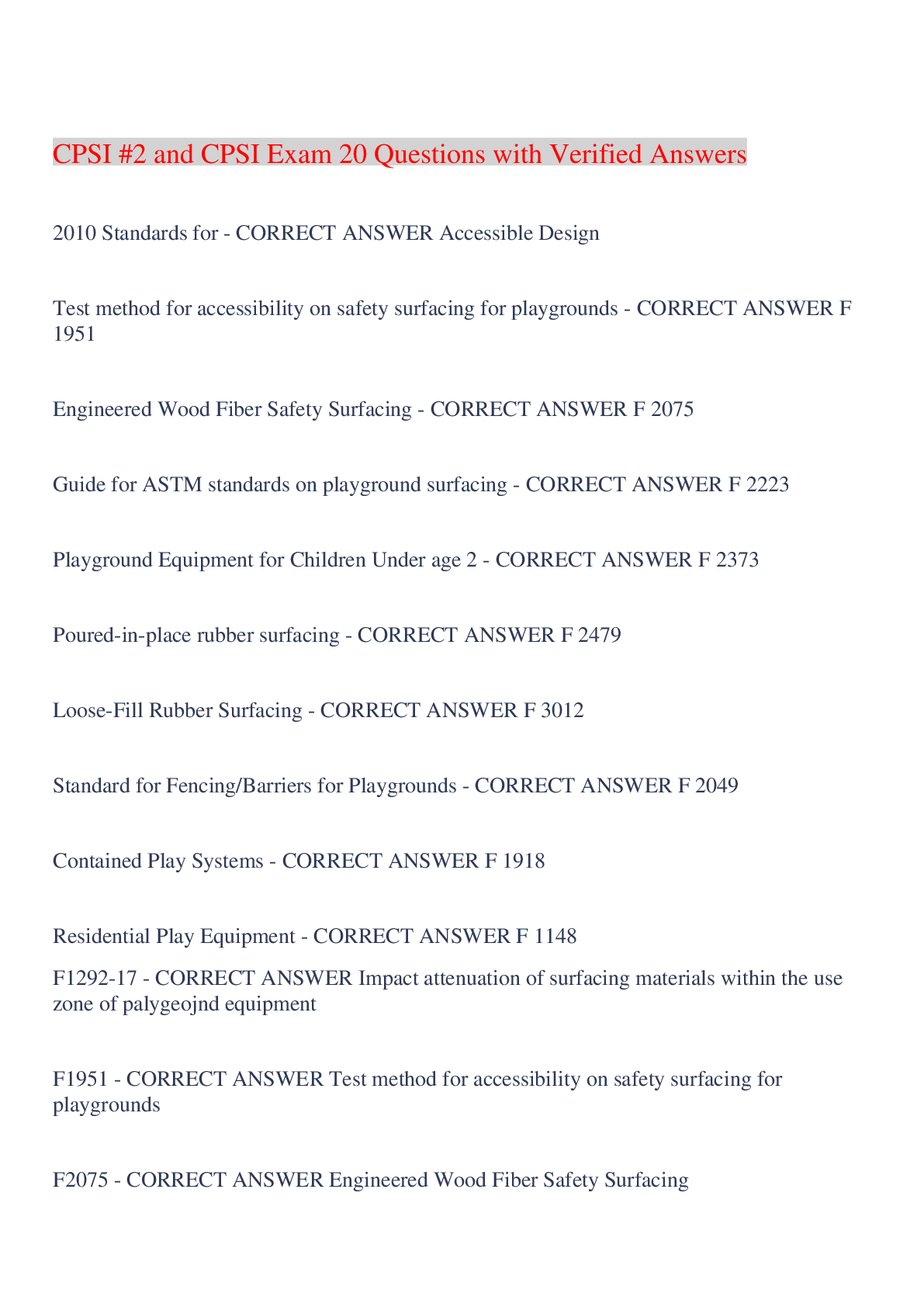
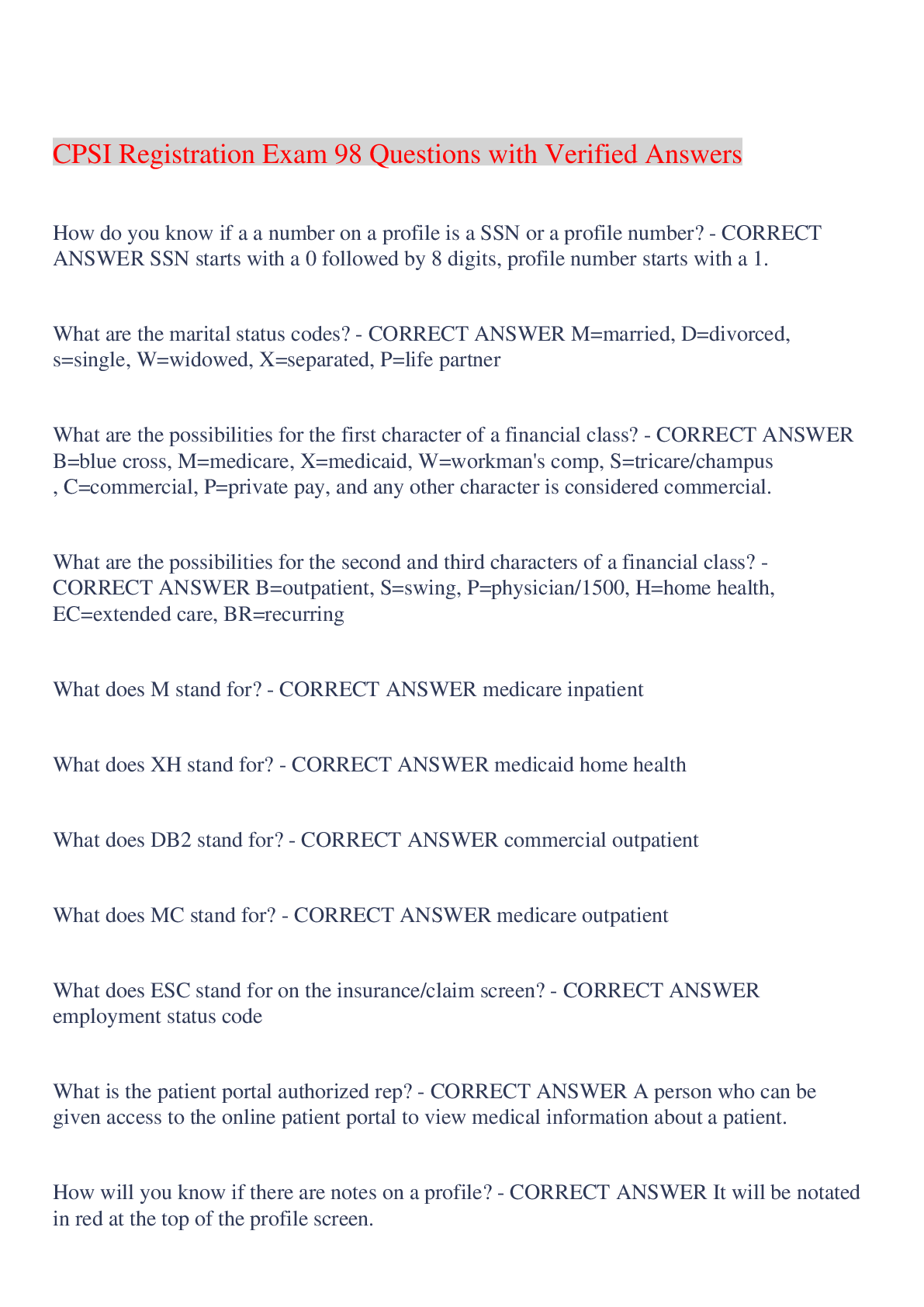
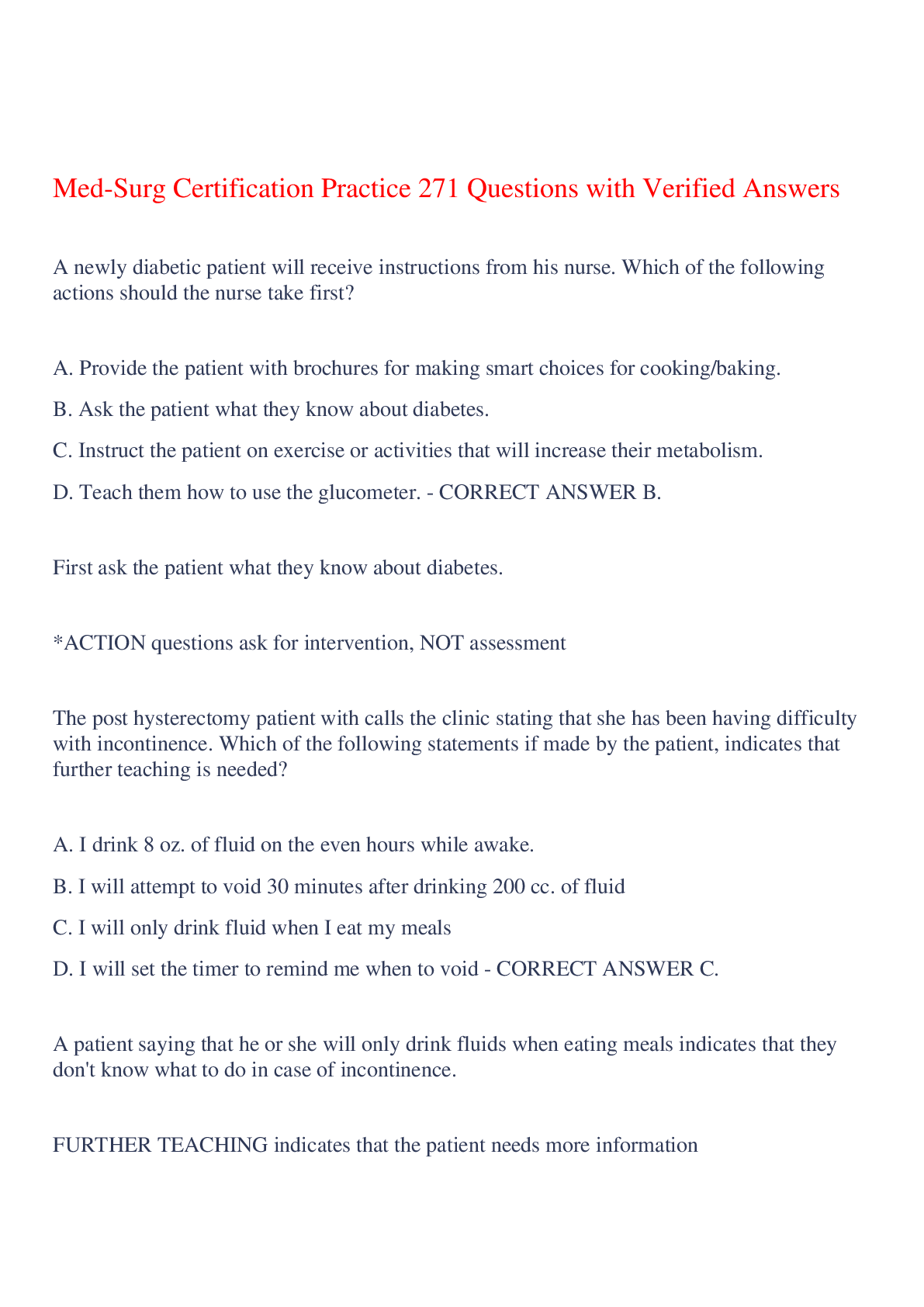




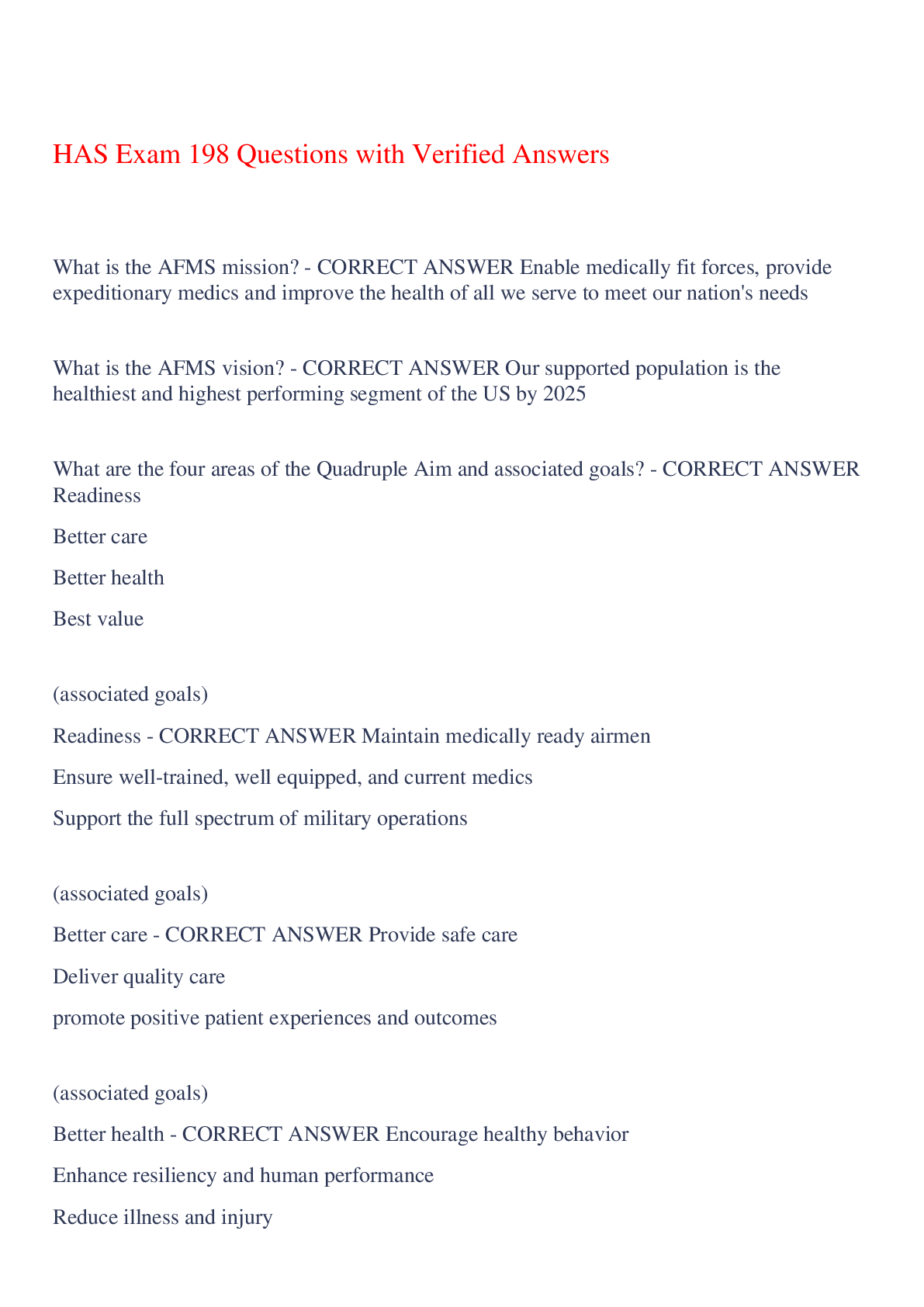
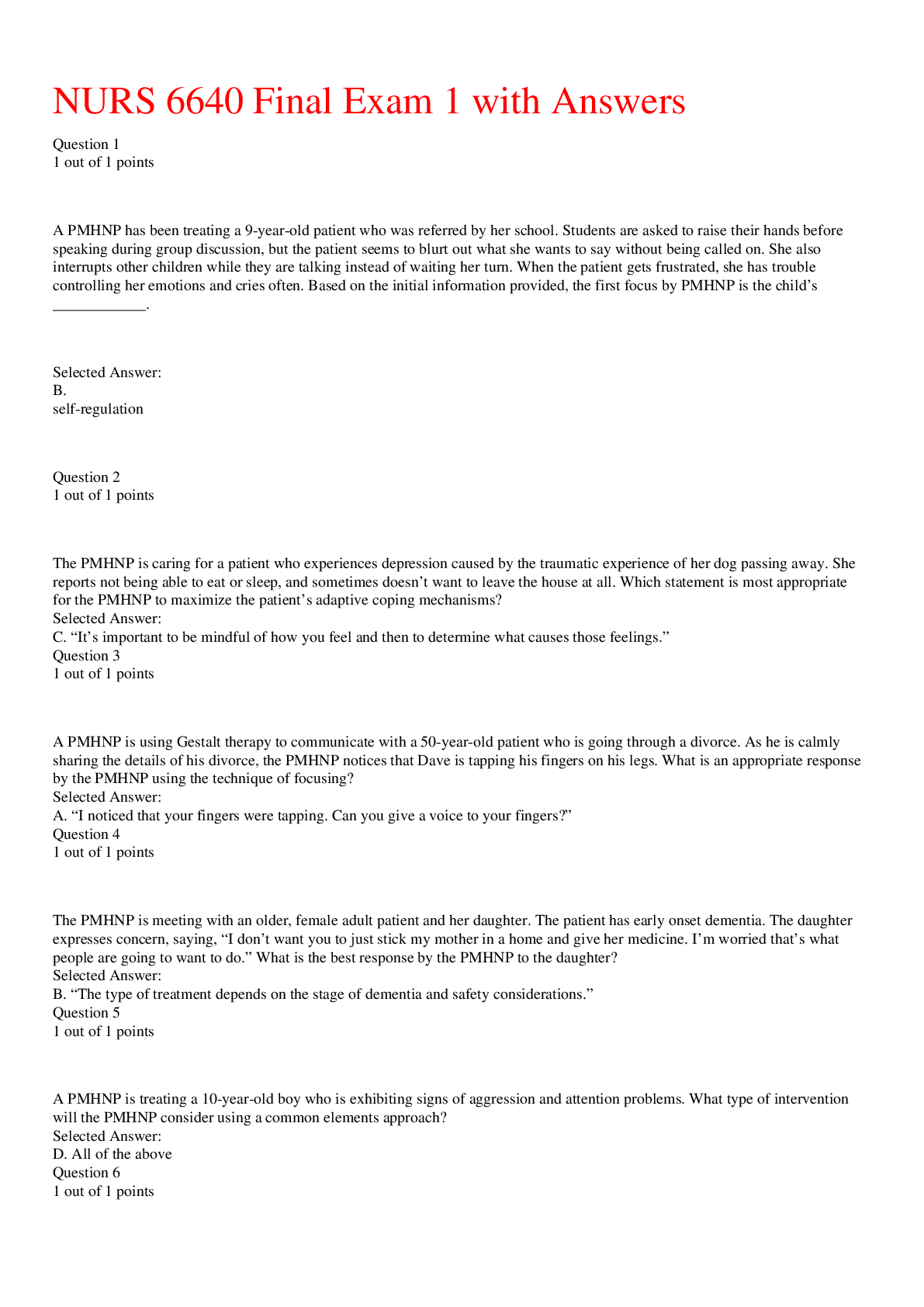


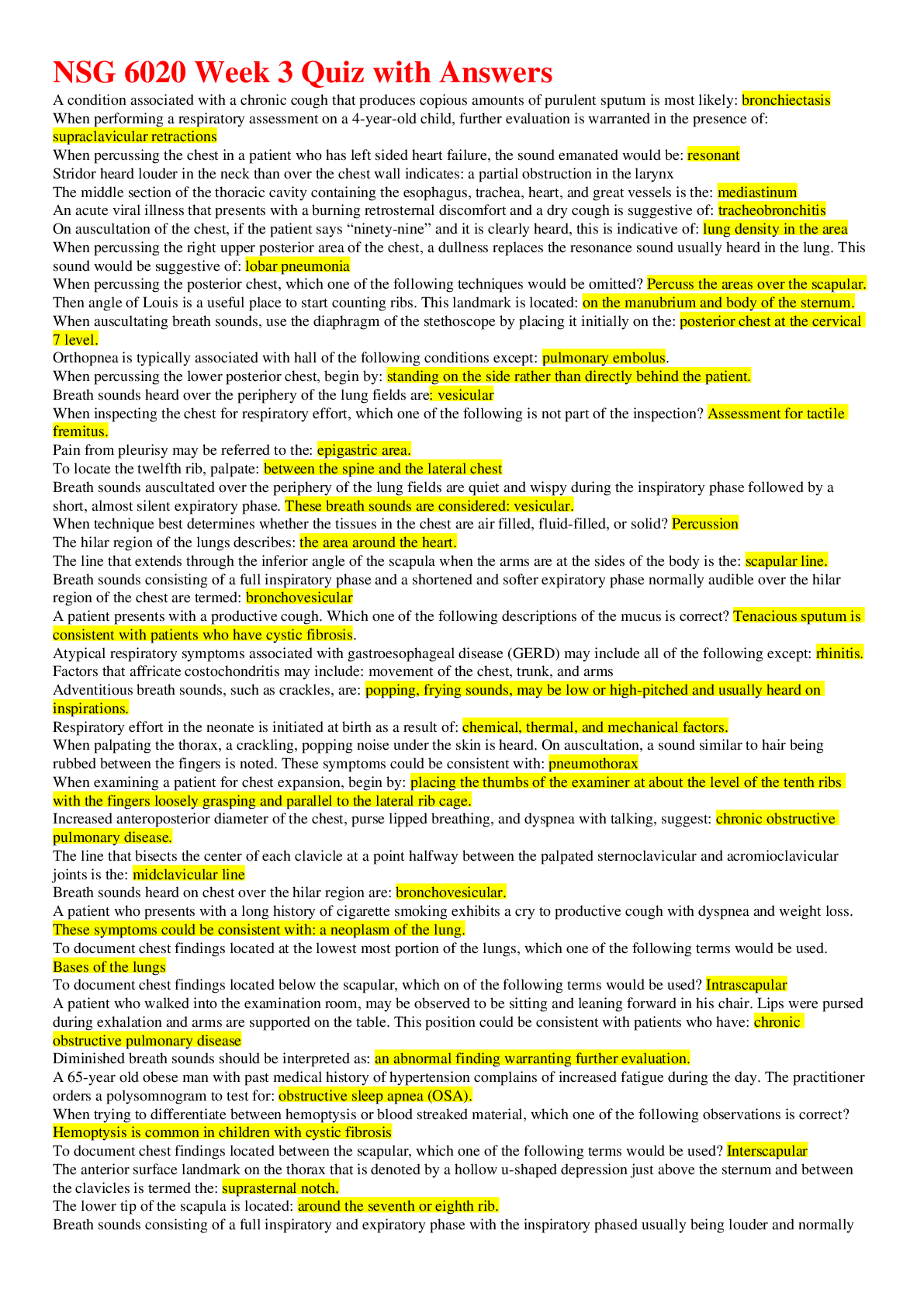
.png)







